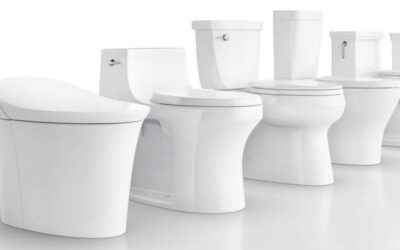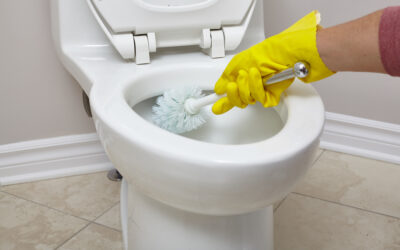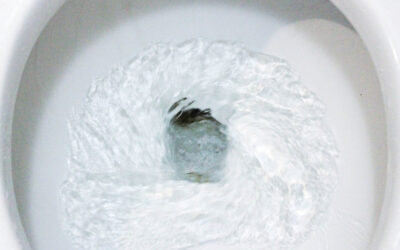Unfortunately, the answer to this question isn’t a straightforward “yes” or “no.” This is because we have to look at what toilet you have in your home and the area in which you live.
However, that doesn’t mean the answer is complicated! Below we have created an easy list to help you learn if flushing your toilet will be a problem when the power has been cut off.
We will also teach you how to flush when there is no water flowing and how to prepare for these incidents.
Bonus Read: How To Increase Toilet Flush Power
Flushing Is Safe If …
1. You Have A Gravity Flush Toilet, And There Is Water Flow
Gravity flush toilets are becoming more and more common across the US and are the most likely type of toilet in a new-build home. They can still be used in a power outage because they aren’t connected to any electrical source.
However, gravity flush toilets function from using water and gravity to move waste around the house. If the water doesn’t disappear down the drain or refill in the tank, your toilet might be broken.
There are many reasons for a power outage, and flooding is one of them. If your water disposal has been flooded, the pressure might have stopped the gravitational pull. In that case, you shouldn’t flush. However, if water is flowing and the tank is emptying and refilling, then you are safe to flush the toilet.
2. You Live In A Large Community
If you live in a city or a large town, your toilets’ water will come from a secured holding tank. This means that the water pressure will be monitored and treated. It shouldn’t be affected by power outages.
3. You Receive Water From A Well
If you use a well to store and receive water, then again, you will have a holding tank. You might experience a reduction in pressure from the power outage, but you should still have enough water for the toilet to flush. Depending on the size of your tank, you should have a couple of days left in the container before you have to worry about manually flushing.
Do Not Flush If …
1. You Have A Septic Tank System
Although gravity flush toilets are becoming more popular, most of the US still use septic tanks. Septic tanks use electricity to pump water around the house. This means that they will not be able to function correctly when the power goes out.
You might still have room for a couple more flushes, but you should save these for emergency loo breaks. If you flush too often in this state, the sewage will likely back up and spill out into your bathrooms.
2. You Use An Upflush Toilet
If you have a toilet in your basement, it will use an upflush system to propel the waste into the main sewer. To achieve this, it needs to be connected to the power. This means that the upflush toilet will not be able to flush and should be avoided at all costs during the power outage.
3. You Live In An Apartment Building
As with upflush toilets, apartment toilets need to force your waste through the building, often going against gravity in the process. The biggest problem will likely come from receiving no water as it cannot be pumped up to your apartment. This means it cannot flush and may cause your waste to linger in the basin.
Bonus Read: 5 Most Common Reason Why Toilet Not Flushing All The Way
No Flowing Water? Here Is How You Flush
If you notice that the water isn’t flowing, and that’s all you need to ensure toilet function (like a septic tank or apartment building toilet), you can pour water into the toilet to create water pressure.
You should pour this water into the tank and flush like normal. This saves more water than pouring it into the basin.
Now the problem is getting the water. We have a couple of ideas to help:
1. Rain Water
If you have a rain collector, you can use this water to fill up your tank. It doesn’t matter if the water is dirty, as you will not be drinking it. However, the liquid should be free of big materials like rocks and thick mud.
2. Water Heater
Your water heater will likely not be in use during this time, so you can use the drain valve at the bottom of the tank to release some water. Do not take all of it, as you do not want to break the water heater, and be careful not to scald yourself.
Wait until the water has cooled down, and then pour it into the toilet tank.
3. Bottled Water
We recommend only doing this in an emergency, as bottled water should be prioritized for drinking. If you have an abundance of bottled water, then this could be an easy solution for you.
Prepare For Future Power Outages
In some parts of the country, you will be warned about a power outage in advance. California, for example, will commonly get warnings due to wildfires. When this happens, you should fill up your bathtub with as much water as possible.
This will then create a safety net for when the water stops flowing. Once this happens, you can use it as described above and pour a gallon of water into the tank.
Most bathtubs can fit around 5 gallons of water, so this method will allow you to take five flushes. This is not a lot, which is why you should try your best to use the toilet only when necessary during a power outage.
If you do not have a bucket big enough to transfer the water, you can use the siphoning method. To siphon, you need to put a hose into the water with one end sticking out. Then seal the exposed end with your thumb.
Next, gently move the covered end into the area you are moving the water to, and put it lower than the water in the bathtub. Lastly, remove your thumb, and the water will flow.
If the hose is higher than the water level in the bathtub, the siphoning will stop.
Bonus Read: 5 Questions Answered About Why Won’t My Toilet Flush











